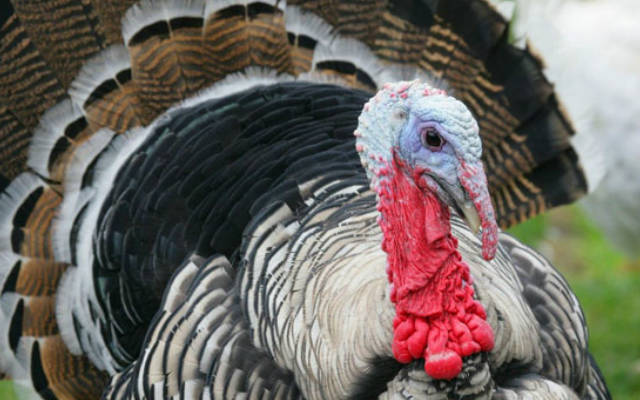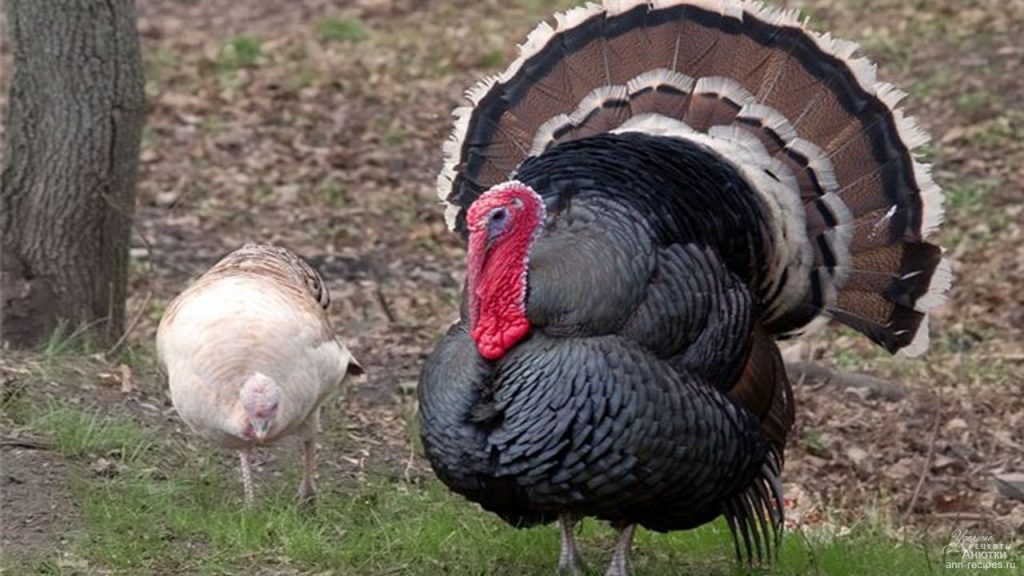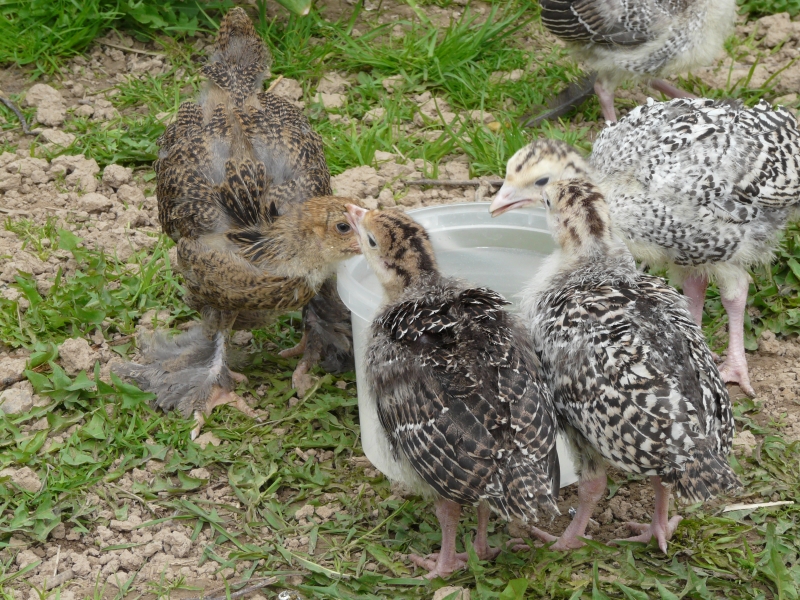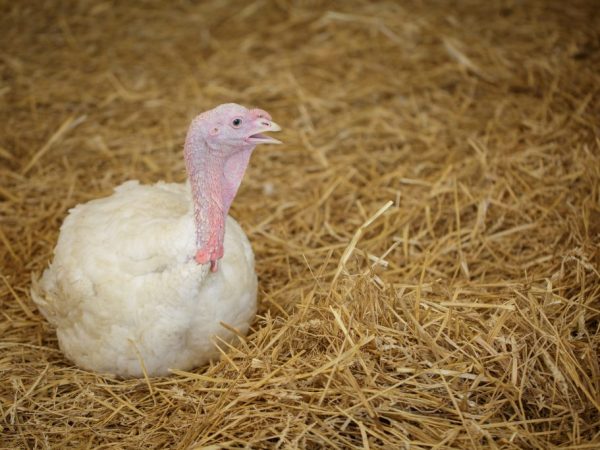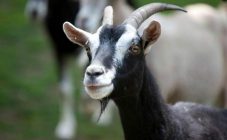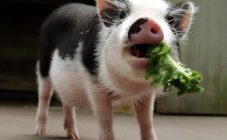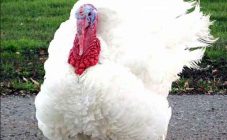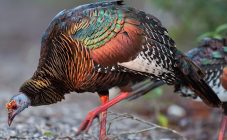Content:
“Spanish chickens” came to Europe at the beginning of the 16th century by import from the New World. In some countries this bird was called "Turkish", in Russia - "Indian chicken". This name gave the species its present name.
Classification of the species
When it comes to poultry, uninformed people ask what is the difference between a turkey and a turkey. In principle, both names can be considered correct, but there are some nuances here:
- turkeys is a general designation of a group of the Fazanov family;
- females are called turkeys;
- males are called turkeys;
- chickens, of course, are called turkeys.
Despite the fact that domestic turkeys have been raised for a long time, there are not many varieties of breeds. Among the popular ones, there are 2 main ones with subspecies.
Varieties
| Name | Signs | Features: |
|---|---|---|
| Moscow Bronze | · The body is oblong, deep; · The back is convex; · The head is elongated and wide; · The neck is elongated, curved; Long legs | High egg production is observed. Suitable for breeding in difficult conditions due to good survival rate of individuals |
| White | 1. Compact dimensions; 2. The body is well developed; 3. Fluffy plumage | |
| North Caucasian Bronze | · Stands out in wide forms; · Plumage with a golden tint, tight to the body; Bronze edging is clearly visible in the tail, loin and on the back | The most ancient domestic breed. Females begin clutching at 10 months of age and lay for about six months, giving up to 80 eggs of a light fawn shade with brown dots |
| White | · It differs from bronze ones in snow-white plumage and more marketable; · The body is long; The sternum is convex-wide | The subspecies is distinguished by high fertility (100 eggs per year) |
Not only the types of turkeys can differ among themselves - there are differences among individuals in the breed itself. Which makes it clear: turkey and turkey are not exactly the same thing.
Sexual characteristics of turkeys
| Breed | Subspecies | Characteristic | |
|---|---|---|---|
| Turkey | Turkey | ||
| Moscow | Bronze | · Has a wide, beautiful tail. On the neck and head there are well-defined folds of leather (the so-called "corals"); Can build up a mass of at least 20 kg | · The neck is long, elongated, weakly feathered; · The body is smaller in comparison with the male; Maximum weight - 13 kg |
| White | · Well-defined exterior - pink beak and legs; Average weight is 13 kg | · Compared to the male, it has a nondescript appearance. There is no plumage on the head and neck; Weight - 7.5 kg | |
| North Caucasian | Bronze | · It differs from the female in its large size and abundance of feathers on the neck; Weighs on average 14 kg | · Above the beak has a large growth, on the head and neck - weak plumage. There is a thin white border on the breast; Live weight - 7 kg |
| White | · Well developed pectoral muscles; Weight is 12.5kg | · Differs from male in fewer feathers and shorter tail; The pulp is capable of gaining 7 kg |
The main feature of males of all breeds is a fleshy red appendage hanging from the top of the beak. By this organ, one can judge the mood of the turkey - in an excited state, it increases to 15 cm.
Young animals quickly gain live weight and by the 4th month they reach about 3-4 kg, which is considered a slaughter weight. At the same time, turkey poults of the bronze North Caucasian breed have an inconspicuous look due to rich black feathers.
Broilers
Among the representatives of all breeds, wide-breasted birds are more appreciated. They are distinguished by a quick mass gain and good nutritional properties of meat. They belong to broilers, whose representatives differ not only in wide breasts, but also in long strong legs, as well as a dense physique. They are characterized by an underdeveloped ridge.
The 3 most popular groups stand out.
Broiler Breed Categories
| Name | Description | Most popular breeds |
|---|---|---|
| Easy | Differs in low weight (males - 10 kg, females - 5 kg). Disease resistant. The turkey is fertile enough | Norfolk, White Dutch |
| Average | Males gain weight 16 kg, females - 7 kg | Representatives of the North Caucasian and Moscow breeds |
| Heavy | Even turkeys weigh at least 11 kg, males reach about 30 kg | Bronze and white wide-breasted, Cross BIG-6, Canadian, Hybrid Converter |
It is worth considering separately the features of some broiler breeds, which are most often found on farmlands.
TOP of the most popular turkey breeds
| Breed | Characteristic |
|---|---|
| Wide-breasted white | Bred in America. It has a large body and bright white plumage. The bird develops well in the cage, without requiring special conditions, although it gains weight on average |
| BIG-6 | A variety of white broad-chested, outwardly very similar to her. But broilers grow into larger individuals, reaching a mass of 25-30 kg |
| Canadian broad-breasted | Differs in dark plumage and rapid weight gain (at 6 weeks the weight reaches 5 kg). Unpretentious in food, but drinks a lot of water |
The table shows the breeds bred for meat. If you need laying hens, it is recommended to choose Chiton, giving up to 100 eggs per year, egg BIG-9 (120 eggs). Also good are the Universal and Black Turkish breeds.
Breeding and caring for a bird
Growing turkey poults from scratch at home can seem like a daunting process for beginners. In fact, poultry breeding is not a tricky business, it only requires compliance with some rules:
- it is desirable that the chickens are about the same age (plus or minus 3 weeks);
- for hatching turkey poults, they take river sand of a fine fraction for bedding, for grown-up young animals - straw and sawdust;
- lighting is an important moment in the development of a bird, therefore, daylight hours are maintained for babies around the clock, from 6 weeks the norm is 8-10 hours;
- from fluctuations in operating parameters in the room, the chick can get sick - up to 4 weeks, the temperature should be above 25 degrees, humidity - 75%.
Regularly monitor the health of the turkeys - healthy individuals are well pubescent, stand firmly on their feet and are excessively active.
Conflicting turkeys should also be removed from the herd in order to prevent bird fights. Turkeys and an adult bird cannot be kept together - the latter will take feed from the babies. Separate pens are also equipped according to gender - living together has a negative impact on the psyche of the bird.
Content with other species is also excluded. Turkeys are conflict birds, so there will always be fights with roosters in the chicken coop. A chicken and a turkey should not be together - the latter will simply peck the baby.
Conditions for keeping turkeys
If the farm has an empty barn, it can be equipped as a poultry house. The main thing is that it is spacious and dry.The walls inside are regularly painted with slaked lime (for the prevention of diseases), the floor is kept clean, changing the litter every 3 days.
The whole room is divided into compartments:
- separately for turkeys, turkeys and young animals;
- in females, nests are formed for laying turkey eggs and separately for incubating chicks;
- there should be a common aviary for joint communication.
A fenced area with a separate exit adjoins the barn (preferably with grass: vetch, alfalfa, clover, oats). Here the bird will receive the ultraviolet light it needs.
The nests are located in the darkest corner of the house and are 50x70x60 cm boxes covered with hay. If one nest is enough for 5 layers, then each hen should have its own.
To rest the bird, it is necessary to build perches from a thick bar at a height of 80 cm, so that each individual has at least 40 cm of space.
Features of the content
The turkey is unpretentious in growing. If it is not possible to allocate a spacious room to her, use the cellular version. For breeding, medium and light crosses are taken, the cages in the house are set in 3 tiers.
If you can't build a roost, you can stop at the floor keeping of the bird. But then large spaces should be allocated for free movement. Make sure that the litter is always dry, and the room is well heated during the cold season.
When growing seasonally, turkey birds are placed in a barn in early spring, with the first greens they are transferred to fenced pastures for the entire warm season, in order to slaughter them for meat in the fall (even before the cold weather). The aviary should be high - at least 2 meters.
The size of the area is calculated based on the livestock - for each individual, 20 sq. m of free space. Be sure to have a feeder and a shed in case of rain.
Bird talk
When raising poultry, it is not enough to know how the turkey looks, it is also important how the turkey speaks. Through the voice of the birds, not only communicate with each other, the state of the turkey can be understood by the scale.
Turkeys - birds are noisy and nervous for any reason. Even the slightest rustle can make a turkey voice. If you observe how this bird is able to speak, then over time, the owner will be able to distinguish the danger signal from the sound made by the turkey when it is about to hatch eggs.
Feeding
The bird should have a balanced diet. The choice can be stopped on a complete ready-made compound feed. Some farmers make their own food: from wheat, peas, corn. Be sure to introduce cottage cheese and a boiled egg, sometimes sugar is included in the menu.
Feeding turkeys
Newly hatched babies should be fed with mushrooms: boiled potatoes, grated carrots, cottage cheese, fish, herbs are poured with skim milk or fermented milk. Such a composition becomes unusable very quickly, so it cannot be prepared in advance, only immediately before feeding.
The first days, the number of feedings is carried out 7 times, then gradually reduced to four meals.
Turkey poults need animal proteins, ascorbic acid, tocopherol. Therefore, "Aminovitan" or "Ryabushka" should be added to food.
The hardest part about raising a turkey is feeding the chicks. But only the first month of their life will be troublesome. Then the young are transferred to an adult diet.
Hormones and antibiotics
Growing turkey is a lucrative business. Therefore, many farmers seek to protect themselves from force majeure, and also take a number of measures to quickly gain marketable mass.
Antibiotics
Birds are susceptible to various infections, therefore, when breeding young animals, an antibiotic is often added to food.Despite the fact that adults have stronger immunity, in case of illness, they are also given medication to prevent massive infection of the herd.
Turkey meat (unlike chicken meat) does not absorb potent drugs. Therefore, such treatment does not have a negative effect on the human body.
Hormones
This is not the case with enzymes. On some farms, boilers are pumped with hormones to rapidly increase the marketable mass. This is facilitated by the protein that is part of the drug. For poultry, this is an important element in development, for humans, such meat is harmful:
- hormones that have entered the body in this way have a carcinogenic effect on it;
- hormonal imbalance and disruption in the metabolic system are possible;
- there is a risk of developing oncological diseases: breast cancer (in women) and prostate (in men), as well as the effect on reproductive function;
- the hormone that has got into the meat is especially dangerous for the growing body;
- a product with enzymes provokes allergic reactions and autoimmune disorders.
It is possible to partially reduce the effect of hormones if the meat is cooked in 2 stages, draining the first broth. Frying such a product is not recommended, as the amount of carcinogens increases.
If there is an opportunity to raise a bird on your own, you should think about breeding turkey poults. Taking care of a bird is not troublesome and quite exciting (and even profitable). In addition, turkey meat is more useful than chicken meat. The turkey egg is considered the most dietary product.
